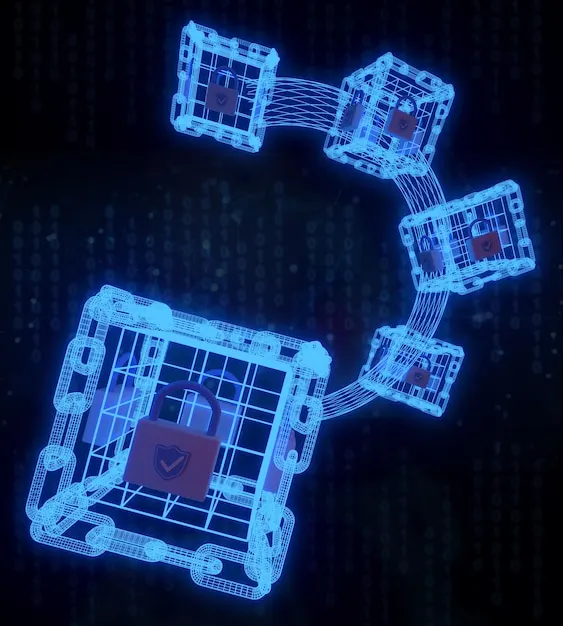In a world where digital transactions and data sharing have become the backbone of our global economy, ensuring security, transparency, and efficiency has never been more critical. Enter blockchain technology — a revolutionary concept that is transforming the way we exchange assets, record transactions, and build trust within a business network. But what exactly is blockchain, and why is it being hailed as a game-changer across industries like financial services, healthcare, and supply chain management?
At its core, blockchain is more than just the foundation of cryptocurrencies like Bitcoin. It operates as a distributed ledger technology (DLT), allowing multiple participants to maintain and share an immutable record of data, ensuring transparency and minimizing the need for intermediaries. Whether it’s tracking the origin of goods in a supply chain, securing sensitive healthcare data, or automating business operations through smart contracts, blockchain is redefining the meaning of trust and accountability in the digital space.
But how does this technology actually work? What makes it secure, decentralized, and immutable? And more importantly, how can businesses leverage it to streamline operations, minimize cybersecurity risks, and optimize efficiency? In this blog, we’ll dive deep into the fascinating world of blockchain, exploring its key features, applications, and transformative potential.
So, whether you’re a business professional curious about its impact on digital identity or a tech enthusiast keen on understanding how blockchain fosters trust through consensus, this comprehensive guide is designed to simplify the complexities and uncover the vast opportunities that blockchain technology has to offer.
Understanding blockchain technology
Imagine a notebook where you and your friends keep track of every transaction you make with each other. But instead of one person holding the notebook, everyone has a copy of it. Every time someone writes down a new transaction, everyone else checks it to make sure it’s correct and then adds it to their own copy of the notebook.
Now, to make sure nobody cheats, once a page in the notebook is full of transactions, it gets locked using a special puzzle that only computers can solve. Once locked, it cannot be changed, and a new page starts. Each new page is connected to the previous one, forming a chain of pages—hence the name Blockchain.
Because everyone has a copy and each page is permanently locked, it’s nearly impossible to cheat or alter past transactions. This makes blockchain secure, transparent, and trustworthy.
This technology is used in cryptocurrencies (like Bitcoin), smart contracts, and many other applications where trust and security matter.
Lets connect cryptocurrency with blockchain
Imagine you and your friends want to exchange digital money without needing a bank. Instead of relying on a central authority (like a bank) to keep track of transactions, you use a blockchain—a public, decentralized ledger that records every transaction transparently and securely.
Here’s how it works:
- Sending Money: When you send Bitcoin (or any cryptocurrency) to someone, your transaction is broadcasted to a network of computers (called nodes).
- Verification: These computers check if you have enough balance and confirm that the transaction is valid.
- Adding to Blockchain: Once verified, the transaction is grouped with others into a “block.” This block is then added to the chain using cryptographic security, ensuring it can’t be altered.
- Decentralization: Since the blockchain is shared among thousands of computers, no single entity controls it. This prevents fraud and ensures transparency.
Because of blockchain, cryptocurrencies are secure, transparent, and don’t require banks or middlemen to function. This is why Bitcoin and other cryptocurrencies are often called decentralized digital money.
Conclusion: The Future of Blockchain is Now
As we stand on the brink of a digital revolution, blockchain technology is proving to be more than just a fleeting trend—it’s reshaping the future of business networks, asset management, and cybersecurity. From ensuring transparency in supply chains to safeguarding healthcare data and facilitating seamless financial transactions, blockchain is fundamentally transforming how we exchange information and build trust.
But the true potential of blockchain goes far beyond what we see today. Imagine a world where digital identities are protected, smart contracts execute automatically, and business operations are streamlined without intermediaries. This isn’t just theoretical—it’s rapidly becoming a new standard. Major industries, including financial services, healthcare, and logistics, are already leveraging blockchain’s efficiency to optimize their operations and reduce risk management challenges.
The question now is — how can you position yourself or your business to harness the power of blockchain? Whether you’re a startup looking to integrate smart contracts, a large enterprise aiming to enhance supply chain transparency, or a developer exploring blockchain applications, understanding and adopting this technology will be critical to staying competitive in the digital economy.
However, like any transformative technology, blockchain comes with its challenges—scalability, regulatory uncertainties, and cybersecurity risks—but the continuous innovation in distributed ledger technology is gradually addressing these concerns. Companies like IBM Blockchain and platforms like Hyperledger are pioneering solutions that enhance blockchain’s efficiency and accessibility, paving the way for wider adoption.
So, what’s next? As blockchain technology continues to evolve, it’s clear that its influence will extend beyond financial transactions. It will redefine business models, digital identity management, and automation. The key lies in embracing the change, learning about its possibilities, and leveraging its power to drive efficiency and transparency in your operations.
Are you ready to be part of this revolution? Whether you’re just scratching the surface or diving deep into blockchain solutions, now is the time to act. The future of secure, decentralized, and transparent transactions is here — and it’s built on blockchain.





